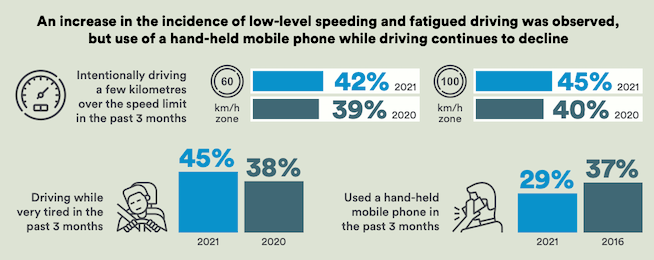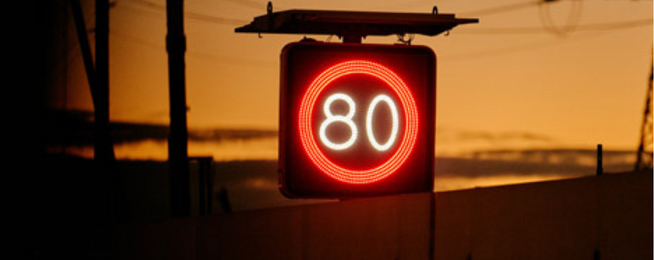Drivers continue to ignore the risks of speeding, and the problem is getting worse, according to new data.
A survey of more than 2500 drivers has revealed the highest incidence of self-reported intentional speeding since 2016.
This validates observations from bike riders around the country that the drivers they share the road with are in even more of a rush than usual, seemingly unconcerned for the welfare of other road users.
This new survey is from Victoria, regarded as having more bike-friendly roads, but the trend is national and could be worse elsewhere.
The findings by the Transport Accident Commission (TAC) showed an increase in respondents who admitted to intentionally speeding in 60km/h zones (42 per cent versus 39 per cent in 2020) or 100km/h zones (45 per cent versus 40 per cent in 2020).
The report also uncovered that people viewed speeding as less dangerous than most other high-risk driving behaviours, such as drink driving and driving while using a mobile device.
Speed remains a key factor in Victorian road trauma – contributing to around 30 per cent of deaths each year, and 25 per cent of serious injuries.
At the time of writing, 147 people have been killed on Victoria’s roads, compared to 130 at the same time last year.
Astonishingly, at the very time Victoria is upping its anti-speeding measures, NSW is easing off, reversing its decision for more effective speed limit enforcement.
According to media reports, NSW speed cameras will have to advertise their presence on the road, and will not be able to operate in hidden spots so as to catch more offenders.
This actually will lead to more intentional speeding and will habituate risky behaviour amongst the worst offenders.

Other key findings revealed in this year’s 2021 TAC Road Safety Monitor, include:
- 45 per cent admitted to driving while feeling drowsy – an increase from 2020 (38 per cent)
- 29 per cent had used their phone illegally while driving in the preceding three months – however, this has
declined substantially from 37 per cent in 2016 - 24 per cent drove between the hours of 10 pm- 6 am at least twice a week – an increase on 2020 (20 per cent)
- 4 per cent had driven when they knew or thought they were over the legal blood alcohol limit – consistent with previous years, continuing a downward trend year-on-year
Victorian Minister for Roads and Road Safety Ben Carroll said: “We know the majority of Victorians do the right thing, but it is unacceptable that there are still a small number of people who willingly put themselves and others at risk.”
“It is deeply concerning to see so many lives being lost on our roads, and we can’t sit by and accept it – we are pleading with anyone thinking of partaking in risk-taking behaviour to heed the warning and slow down.”
Become our friend
Find out more about Bicycle Network and support us in making it easier for people to ride bikes.


